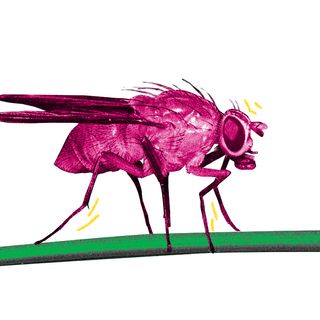In yet another development that blurs the line between humans and machines, an artificial intelligence system named PLATO has been trained to think like a human baby. Arguably, AIs are capable of far more complex problem solving than human beings — but they still cannot perceive the world (yet) quite as we can. But thinking like babies is no mean feat: they have been recognized as little scientists unto their own, for their ingenuity in comprehending and learning about the world. In a new experiment, a team of neuroscientists and AI researchers aimed to simultaneously understand how human babies learn, and also whether this learning process can be replicated in machines.
Published on Monday in Nature Human Behaviour, the study primarily tested whether PLATO was capable of certain developmental cognition traits: like permanence, solidity, and continuity. In simple terms, these explain how we know, respectively, that objects can’t vanish, that solid objects can’t move through each other, and that objects move in a consistent way. The concepts are part of what is known as “intuitive physics”, and is something that “enables our pragmatic engagement with the physical world and forms a key component of ‘common sense’ aspects of thought,” the researchers wrote.
Currently, AI lags far behind human babies in this learning ability. While they are capable of impressive feats of problem-solving and number-crunching, it is “increasingly clear that something fundamental is still missing. In particular, state-of-the-art AI systems still struggle to capture the ‘common sense’ knowledge that guides prediction, inference, and action in everyday human scenarios,” they added.
Intuitive physics is what’s at work when babies react with surprise to being shown a magic trick, where something disappears and reappears in a different place, or anything else similar that defies the laws of physics. The question that then arises is: how do they intuitively know these laws of physics? Is it something that’s innate in humans from birth, or do we learn them with the help of visual cues?
Related on The Swaddle:
A Google Employee Claimed an AI Chatbot Became Sentient
This is where PLATO came in. PLATO was shown visuals of objects obeying these laws of physics that convey permanence, continuity, and solidity to us. These include videos of balls bouncing, going behind another object, and so on. Then, when the researchers showed PLATO videos where some law of physics was broken, it expressed “surprise” — essentially registering that something was amiss. This was the case even when the law-breaking videos included different objects from the ones that PLATO saw while learning, suggesting that it can build upon initial training and apply the concepts elsewhere.
What this tells us is that visual learning is a key part of absorbing concepts that help us navigate the world and which boost our spatial understanding. But babies are still a step ahead: where AI cannot react to similar situations that don’t involve objects, babies can — suggesting that there’s still another missing link that developmental psychologists aren’t seeing with respect to babies.
“Our modeling work provides a proof-of-concept demonstration that at least some central concepts in intuitive physics can be acquired through visual learning,” the researchers note. Previous research has observed how babies make hypotheses and even test them, going beyond just visual learning: a study published in Science observed how babies can slam objects on the ground to test their solidity, or drop them to test their weightiness. While this can explain some of the lag that AI has with respect to tiny humans, there is still more that we could potentially learn not just about the way babies learn, but also about how AI systems can improve.
“This represents just one opportunity that our model might offer as a tool for computational research into the origins of intuitive physics in human development,” the paper notes.




